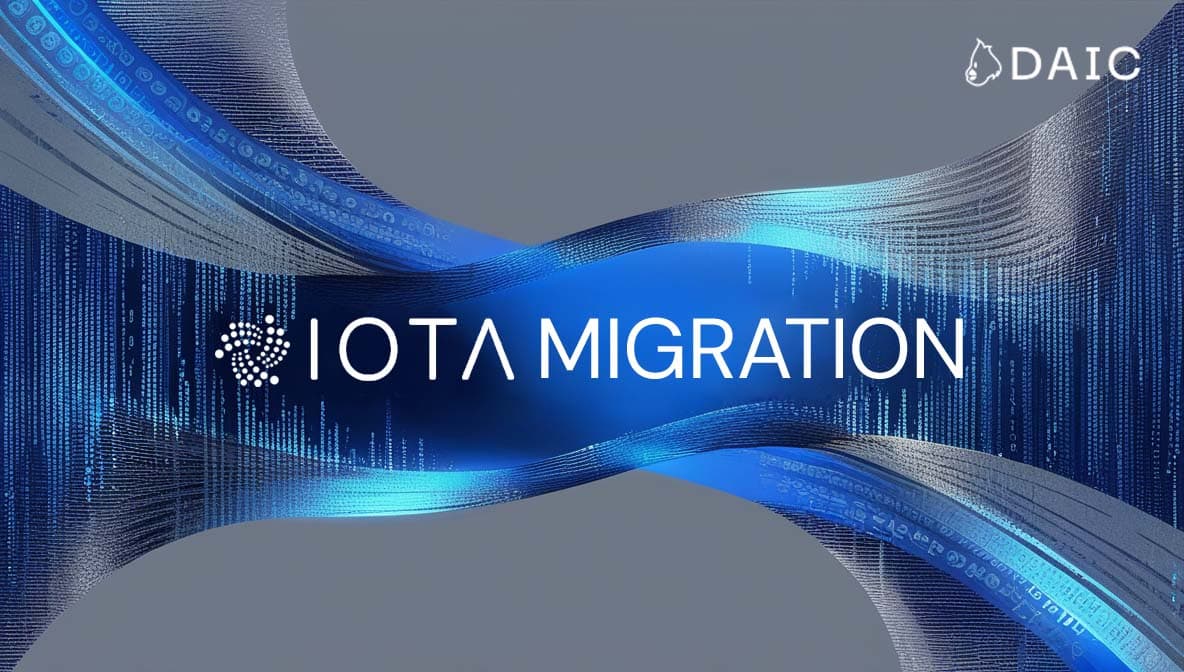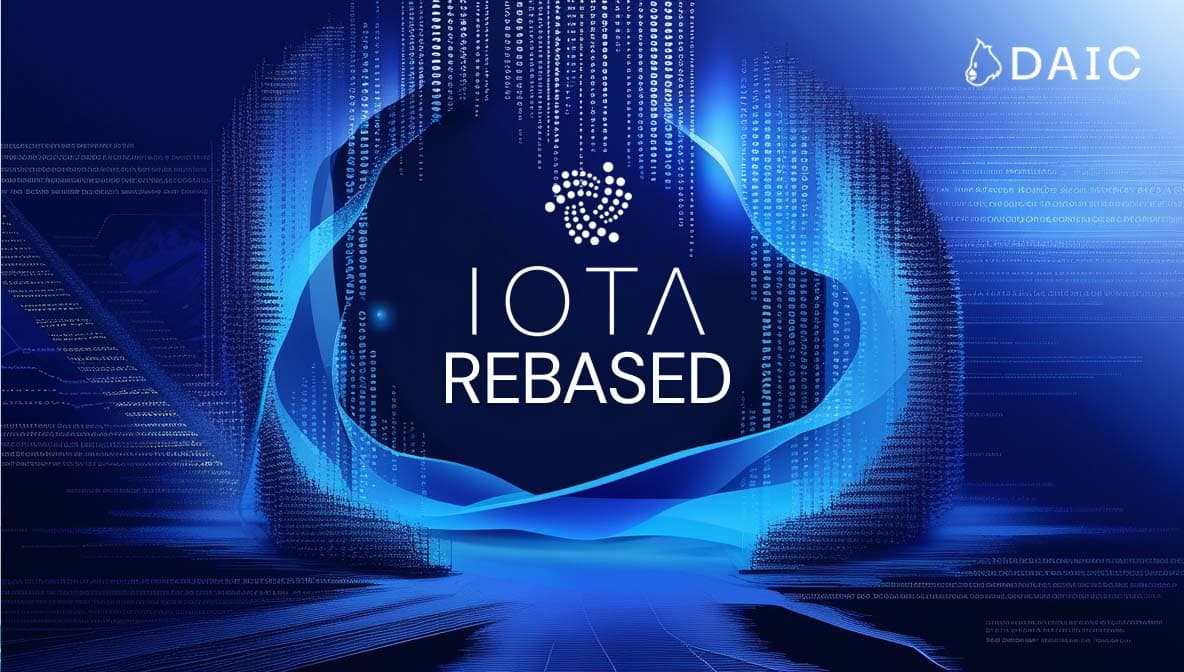IOTA (IOTA) Staking
Stake IOTA to earn staking rewards and secure the IOTA network.
Staking Stats
- Reward Rate (APR)
- ≈ 12%
- Reward Frequency
- every block
- Lockup Period
- 21d
- DAIC Commission
- 10%
- Staked with us
- 27.8M IOTA
IOTA Staking Calculator
- Staked IOTA
- 9.8K IOTA
- $999.9
- Earnings at
- 12% APR
- Monthly
- 87.8 IOTA equals $9
- Yearly
- 1.1K IOTA equals $108
Stake Now
About IOTA
IOTA is an advanced Distributed Ledger Technology (DLT) project that was initially founded in 2015 to address the unique requirements of the Internet of Things (IoT). Its groundbreaking basis was the Tangle, a Directed Acyclic Graph (DAG), specifically designed to provide a scalable infrastructure for machine-to-machine interactions.
After years of working towards achieving full decentralization, IOTA took a significant strategic turn. This set the stage for the IOTA Rebased Mainnet launch on May 5, 2025. This major upgrade repositioned IOTA as a high-performance Layer 1 (L1) blockchain with Delegated Proof-of-Stake (DPoS) consensus, the Move Virtual Machine (MoveVM) for secure L1 smart contracts, and a new tokenomics model with transaction fees and staking rewards. IOTA is set to be a robust platform for real-world applications, including tokenization, trade finance, and decentralized finance (DeFi).
What makes IOTA special?
The IOTA Rebased mainnet provides several new features and strategic advantages:
- High Performance & Scalability: Built to provide throughput of more than 50,000 transactions per second (TPS) and sub-second finality (around 400-500ms). This is made possible by the parallel processing nature of the Mysticeti consensus protocol and the object model of the MoveVM.
- Security-Focused Smart Contracts Using MoveVM: IOTA added the MoveVM, which has a strong reputation for being well-focused on safety and security. Features like re-entrancy attacks prevention, static typing, and resource-oriented programming eliminate a lot of typical smart contract threats.
- Multi-VM Ledger for Developer Flexibility: IOTA both supports the L1 MoveVM for new security-critical use cases and its current L2 IOTA EVM chain. This enables developers who know Ethereum's Solidity and tools to seamlessly deploy dApps while still providing the rich features of Move.
- Mysticeti Consensus Protocol: At the heart of IOTA's consensus is Mysticeti, a Byzantine Fault Tolerant (BFT) protocol using a DAG internally. This design achieves low latency and high throughput with parallel block processing and a three-round commit rule for rapid transaction finality, which achieves theoretical efficiency bounds.
- Real-World Asset (RWA) Tokenization Focus: IOTA is focusing on the tokenization of real-world assets, supported by partnerships with institutional participants like Zodia Custody and initiatives like the Tenity RWA Accelerator.
- Commitment to Real-World Utility: Long-standing partnerships and projects in areas like trade finance (e.g., TLIP/TWIN with the World Economic Forum), digital identity, and sustainability (e.g., Digital Product Passports with Eviden).
- Enhance Tokenomics with User Rewards: Introduces staking rewards (creates inflation) and burning of transaction fees (creates deflationary pressure), resulting in a fluid total supply. The "IOTA Gas Station" functionality allows dApps to sponsor user fee costs, yielding a feeless end-user experience within specific use cases.
Staking: The Gateway to IOTA Potential
Staking IOTA is a vital way to participate in the network's new DPoS consensus mechanism. By staking your IOTA tokens, you contribute to the security and decentralization of the IOTA Rebased while earning rewards.
Here's why it's good to stake IOTA:
- Earn Passive Income: Allow your IOTA tokens to earn rewards on your behalf in staking.
- Improve Network Security: Your stake helps make the network as a whole more secure, making it more resilient to possible attacks.
- Promote Decentralization: By delegating to a validator, you are directly participating in the distributed consensus process.
- Low Cost of Entry: You don't need to be tech-savvy or host your own node, simply delegate to a trusted validator.
- Align with IOTA's Growth: The bigger the ecosystem gets and the more beneficial the network is, the more valuable active contribution through staking can be.
Join us in securing the future of IOTA and unlock the potential of your IOTA holdings!
IOTA Staking FAQ
What is the IOTA Token?
The IOTA token is the native coin of the IOTA Rebased network. It is used for staking, paying transaction (gas) fees, value transfer, and participating in on-chain governance. Following the Rebased launch, 4.6 billion IOTA were migrated, and 767,000 new tokens are minted each epoch (approx. 24 hours) for staking rewards, meaning the total supply is dynamic.
What is the minimum amount of IOTA required to stake?
To become a validator, 2 million IOTA in stake is required. For delegators, the official documentation does not specify a minimum, this is typically nominal and set by wallet interfaces.
What are the rewards for staking IOTA?
Rewards primarily come from newly minted IOTA tokens per epoch, distributed proportionally to validators and their delegators.
When can I start earning rewards?
Typically, your stake begins accruing rewards from the epoch following the confirmation of your delegation to the chosen validator. An epoch is about 24 hours.
What is the Unbonding Period for staked IOTA?
The official documentation does not detail a specific "unbonding period". Staked tokens are generally locked for the epoch they are active in, with changes taking effect at epoch boundaries (approx. every 24 hours).
Can I withdraw my staked tokens at any time?
You can initiate an unstaking transaction at any time. The release of your principal and accumulated rewards is typically processed at an epoch boundary (approximately every 24 hours).
Can I sell IOTA tokens while they are locked up in staking?
No, directly staked IOTA tokens are locked up and cannot be traded until being unstaked. Future market access to Liquid Staking Tokens (LSTs), which would potentially be tradeable, rests with official IOTA developments.
What are the risks associated with staking IOTA?
Major risks are: possible reduction in rewards due to poor-performing validators, market volatility on IOTA price, and the risks inherent in any blockchain protocol.
Do I need to actively manage or maintain my staked IOTA?
Staking is largely passive process for delegators. However, it is advisable to periodically review your validator's performance and commission rate.
What are the core aspects of IOTA's tokenomics?
IOTA's tokenomics feature: user-paid gas fees (a portion of which is burned, creating deflationary pressure); staking rewards funded by newly minted tokens (767,000 per epoch, causing inflation), a dynamic total supply and storage payments.
Where can I get IOTA tokens?
IOTA tokens are available on several cryptocurrency exchanges. Be sure to use legitimate platforms.
Which wallets support staking IOTA on the Rebased network?
Use the new IOTA browser extension wallet or Nightly wallet for the Rebased mainnet. Ledger hardware wallets will also support IOTA Rebased. Always use official sources for wallets.
IOTA Links
Similar Projects
Stake IOTA with Coinage x DAIC
Stake your IOTA with Coinage x DAIC, a leading validator with a proven track record of successfully managing blockchain infrastructure over several years, DAIC.capital has securely attracted over 27,848 unique stakers and holds more than $180,291,339 in total value staked across 52 chains. This impressive milestone not only demonstrates our wide-ranging expertise but also reflects the deep trust the community places in our stewardship.



